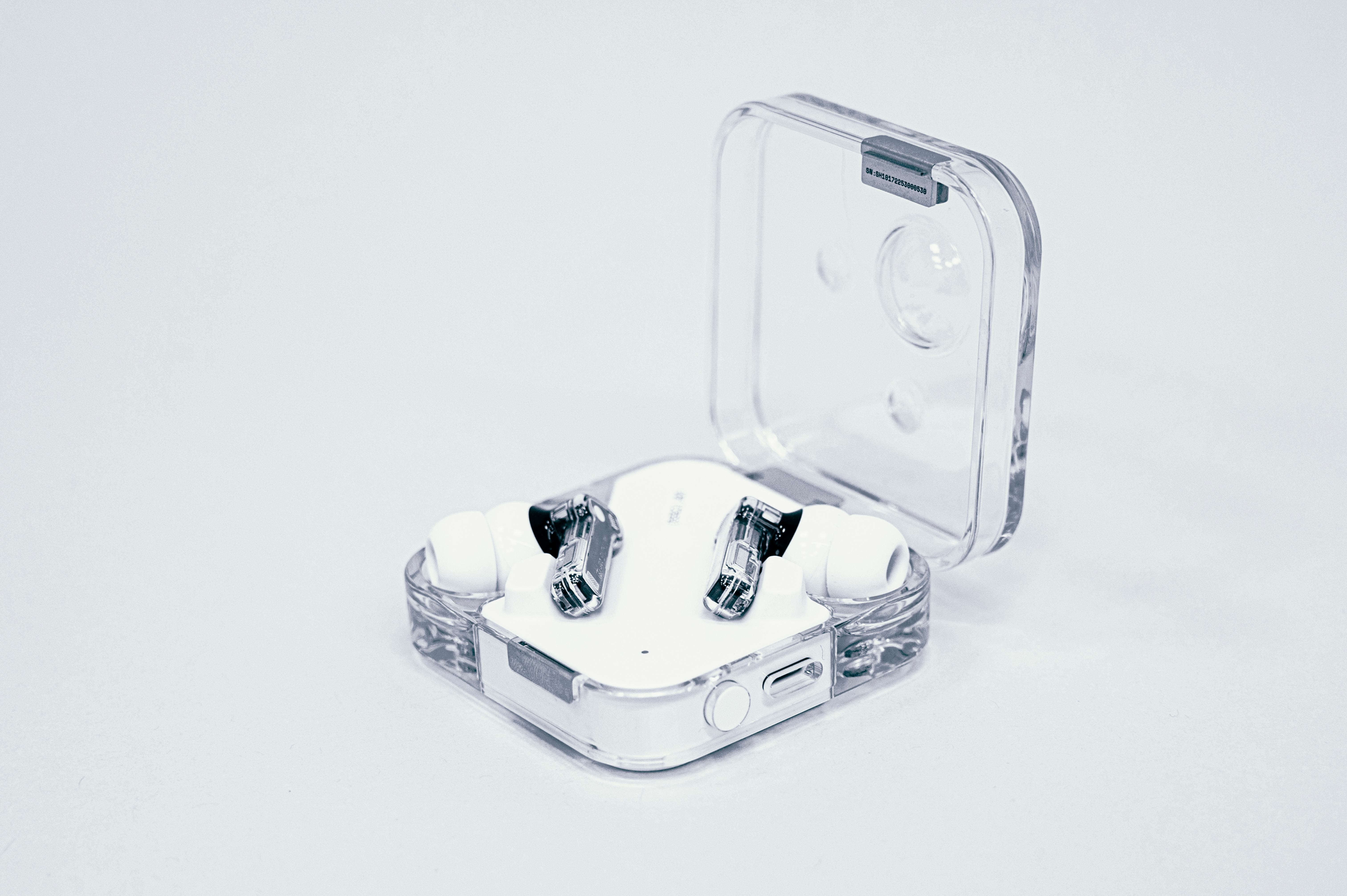
If you know about Nothing, you know that “making tech fun” is its self-appointed crusade. But what is fun, really, in the context of consumer electronics?
Maybe it’s something unexpected; say, a pair of transparent wireless earbuds that let you peer inside, or a charging case that looks like a tube of lipstick. Maybe it’s a phone that lights up like a Space Age Christmas tree when you get a text. To me, that is fun tech. And for Nothing, those feats are check, check, and check.
But any well-adjusted adult knows there’s another side to fun — and by that, I mean a duality. To make tech fun (just like life) you also have to be disciplined. You absolutely, positively, have to make it functional. Take AirPods, for example — the epitome of function. There’s a reason why you can’t swing a MacBook Pro without seeing a pair of the iconic white buds hitching a ride in the lobes of a passerby. They work; they sound great; and as a result, they’re everywhere.
And yes, that does make Apple’s earbuds less cool. Once something is ubiquitous like an AirPod, it loses some of its edge (sorry, I don’t make the rules on cool factor). So, with multiple products under its belt, a second-generation phone in the works, and the benefit of one of the most efficient hype trains in tech, where does that leave Nothing in its battle to make tech fun and functional? If we’re talking about its newest wireless earbuds, the Ear 2 (and trust me, we are) I can say for certain, it leaves them a step ahead of Apple.
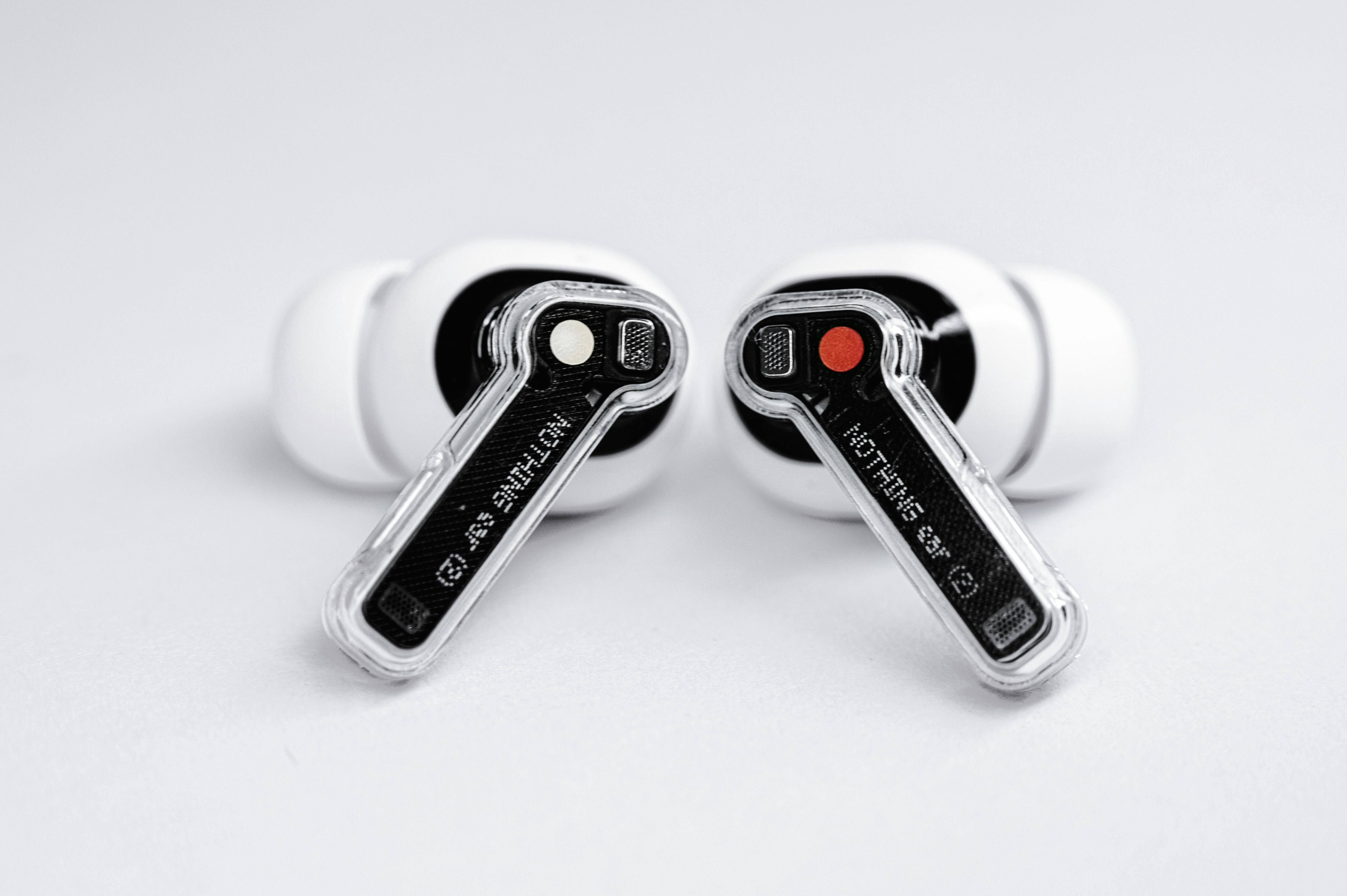
All Grown Up
Listen, no matter who you are, growing up can be hard. Maybe you get picked on, maybe you get moved to another school, or maybe your English teacher decides to teach you the Little Prince in 10th grade (or play the audiobook in class).
But in the case of consumer tech, your character-building may look a little bit like what happened with Nothing’s Ear 1. As my colleague, Ray Wong wrote when Ear 1 was released in 2021, “clearly something is wrong.”
Nothing’s first pair of earbuds (and first product ever, actually) was plagued with connectivity issues. I’ll let Ray’s words summarize:
The first Ear (1) unit had a charging issue. The left earbud either wouldn’t charge or wouldn’t charge past 10 percent. The second pair of Ear (1) buds charged fine, but the active noise cancellation kept malfunctioning randomly and the Bluetooth wouldn’t disconnect from my iPhone 12 Pro even after the buds were returned to their charging case and the cover closed. The third pair of Ear (1) buds — the retail version — supposedly “optimized the sound and call performance with a new firmware update and made a small hardware update to the case, which optimizes earbud connectivity and charging” according to a Nothing spokesperson.
It was, to say the least, not the ideal start for a company with ambitions as lofty as unseating Apple in the wireless audio department, but the seeds the Ear 1 planted are still present in the Ear 2, and the bugs that bogged those ideas down? I’m happy to report they feel like a distant nightmare.

Maturity is what the Ear 2 is offering and that growth manifests in quite a few fruitful ways. For starters: sound quality. Ear 2 just objectively, in every arena, sounds better than its predecessor.
Behind that sound quality boost are a few tweaks to the hardware. While the Ear 2 still uses the same 11.6mm driver, it does have a new custom diaphragm with hybrid materials. This time around, the Ear 2 comes with a diaphragm made with a combination of graphene and polyurethane (the Ear 1’s diaphragm was made solely from the former) both of which are meant to help express both high- and low-end frequencies more clearly. As noted by Nothing, “[polyurethane] is a softer material, so low frequencies come through purer, and more powerful”.
Ear 2 just objectively, in every arena, sounds better than its predecessor.
To top everything off, Nothing made the Ear 2 with a dual-chamber design that gives the speaker more space to breathe and increases airflow (and as a result, clarity).
Even the case, which is, design-wise, largely the same as the Ear 1, has a different feel. Plastic on the inside and out has a more premium composition — a luxury that extends to the ear tips as well. Like the non-ANC Ear Stick, the Ear 2 also retains the same squeeze controls in lieu of the Ear 1’s tap and swipe versions.
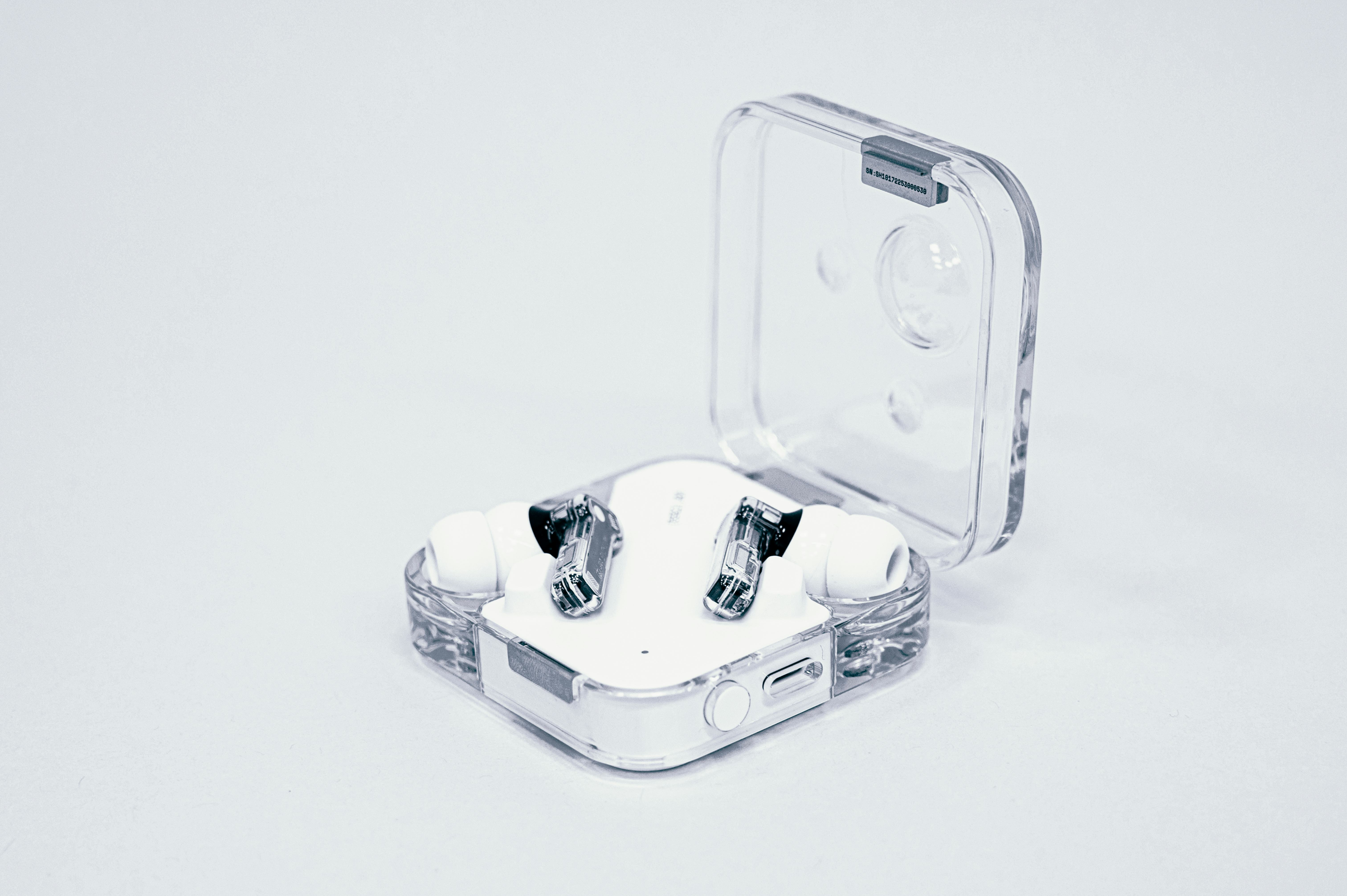
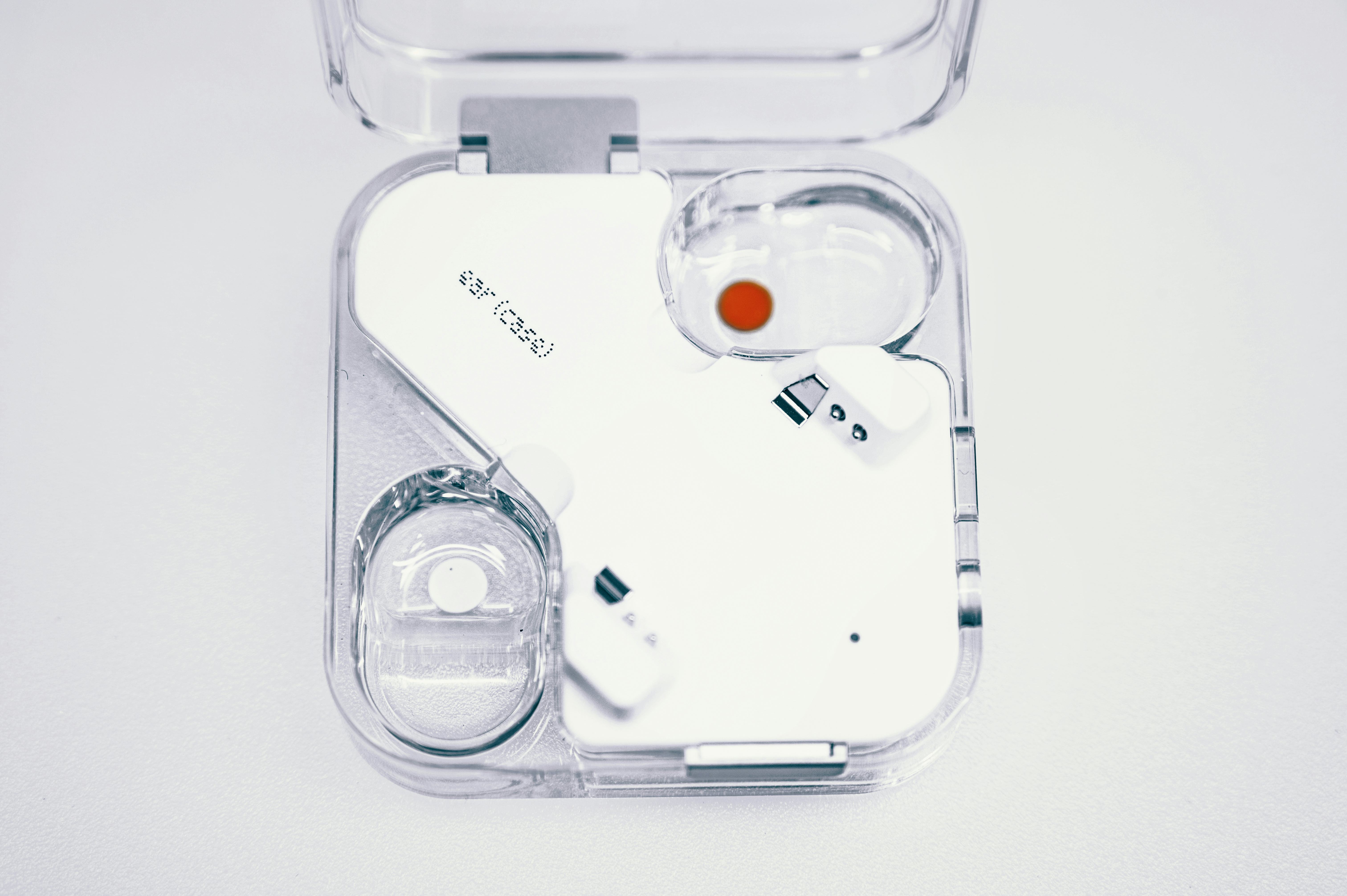
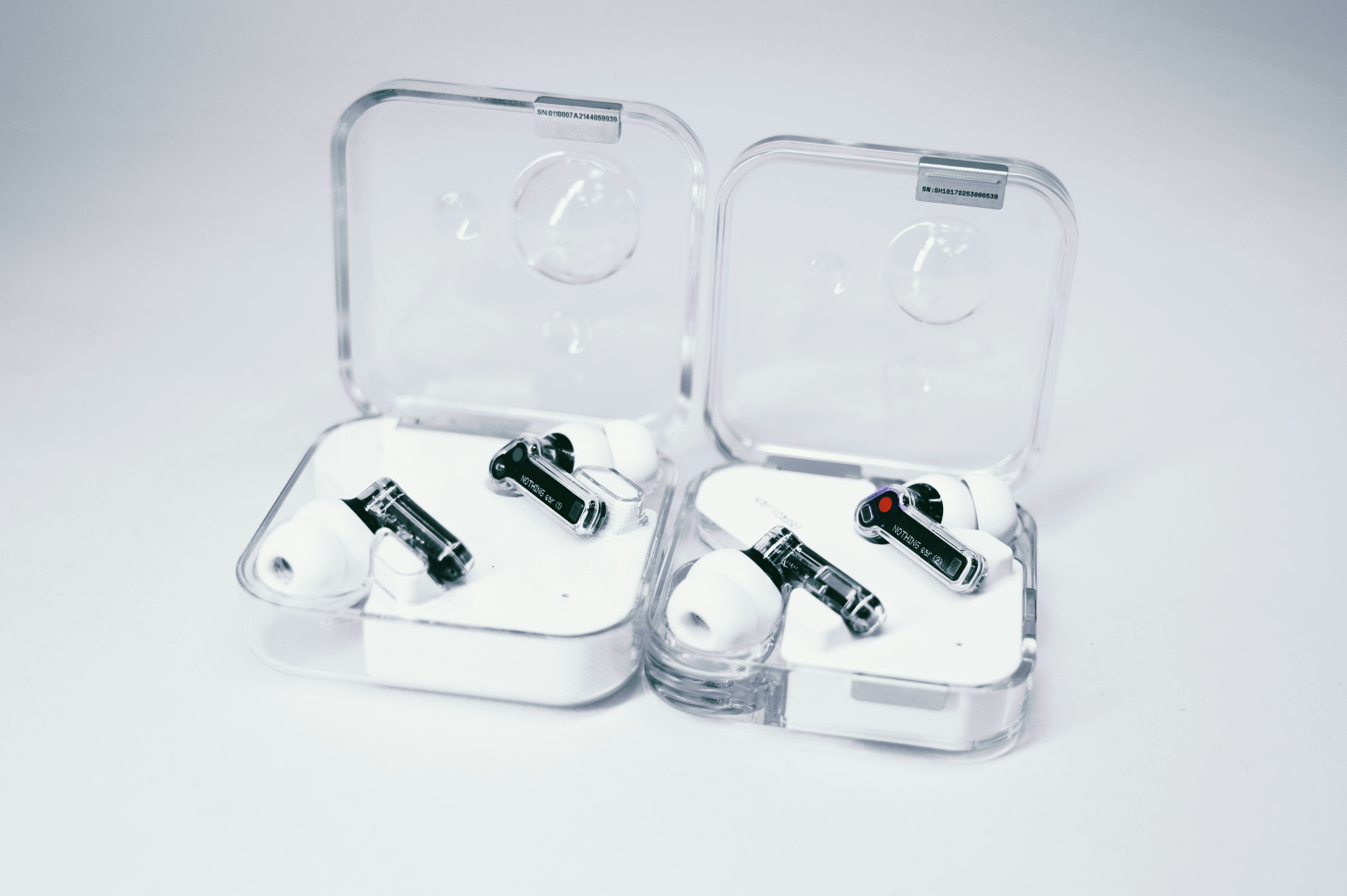
Haters will tell me I’m wrong, but I still think (properly executed) tap and swipe controls would be the ideal method of playing, pausing, and skipping songs. Something about squeezing a tiny earbud delicately perched in my ear always feels wrong to me.
Battery life on the Ear 2 is also upgraded and seems to deliver as advertised. The case should give you about 36 hours of battery, while the buds have about 4 hours of battery life with ANC and 6.3 hours without.
Charging-wise, the Ear 2 Supports up to 2.5W wireless charging, and can reverse charge with compatible devices, including (duh) the Phone 1. Nothing’s Ear 2 case also supports fast charging and, with 10 minutes of charging, can get up to 8 hours.
But the fact is, you don’t need to know the specifics of how the Ear 2 was built to hear the difference. In my many hours of testing Nothing’s newest earbuds, the growth is crystal clear. Sound in any genre I tried is more dynamic and less muddy. I’ve adopted the Ear 1 as my main earbuds for more than a year now, and as an everyday user, I can say for certain that soundwave for soundwave, the Ear 2 is putting out a better audio experience.
And as per usual, hardware is only half the picture.
The X Factor
Nothing is well, nothing, if not ambitious. Since the Ear 1, it’s become more focused on both sides of the tech coin: hardware and software. For its smartphone, that shows up with Nothing OS, and for its wireless earbuds, it’s all about the Nothing X app.
With the launch of its Ear Stick wireless earbuds last year, Nothing also introduced Nothing X, s companion app, which allows for added customization — namely in the form of additional EQ that can be set to augment treble, bass, or voices for calls.
For the Ear 2, Nothing has embraced that customization spirit bringing active noise-cancellation and sound tuning into the fold. The result is a software-centric approach to making your wireless earbuds sound the way you want, when you want.
It all starts with an ear tip fit test. In order to personalize audio, users can go into the Nothing X app (available for iOS and Android), navigate to settings, and tap on “Ear Tip Fit Test,” which will determine the seal of your wireless earbuds in your ear. If the seal is sufficient, you’ll get two green checkmarks in the app giving you the go-ahead. If it’s not quite there, you’ll get a yellow checkmark, and from there, you can either adjust your wireless earbud for a tighter fit or change the tips for a better vacuum.
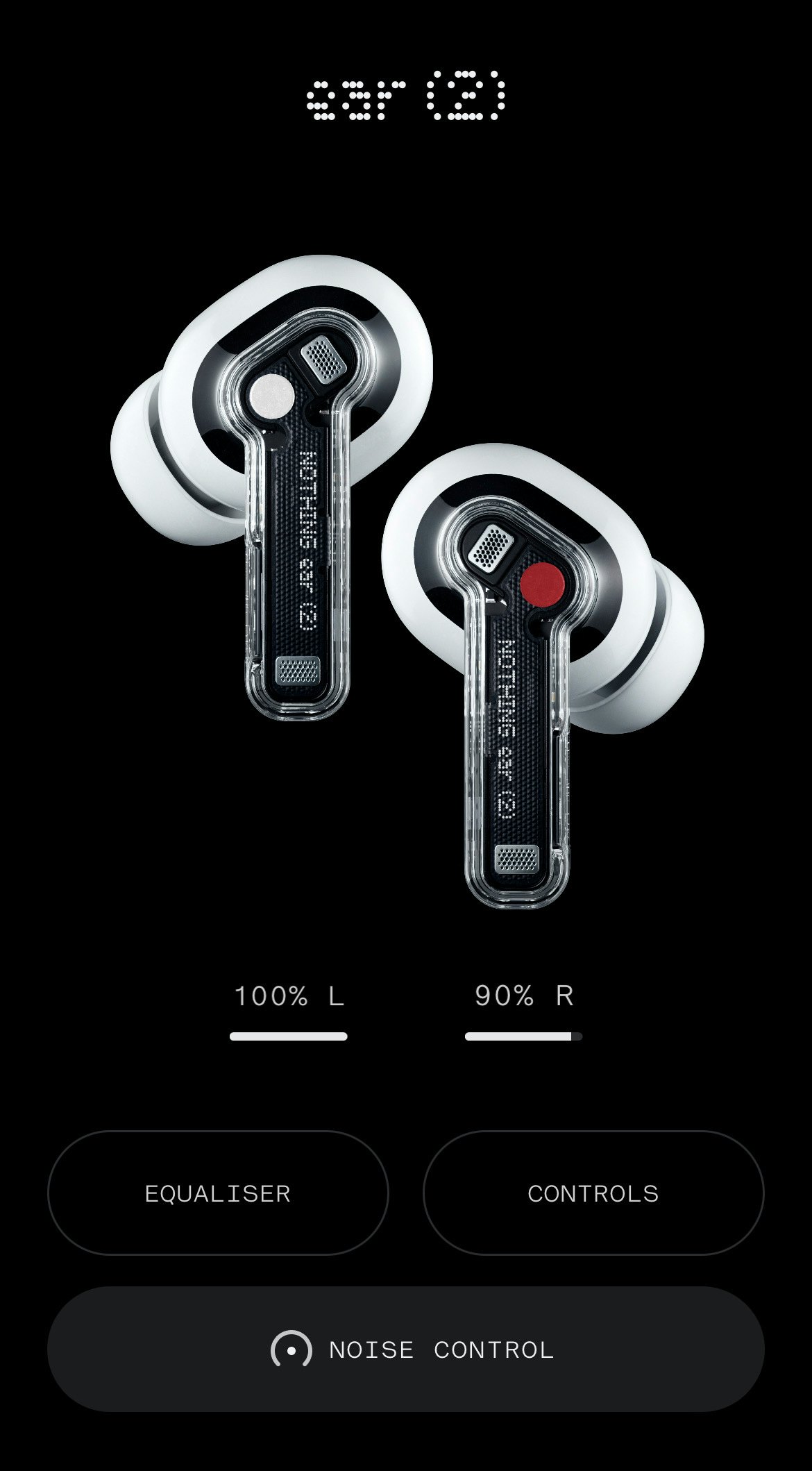

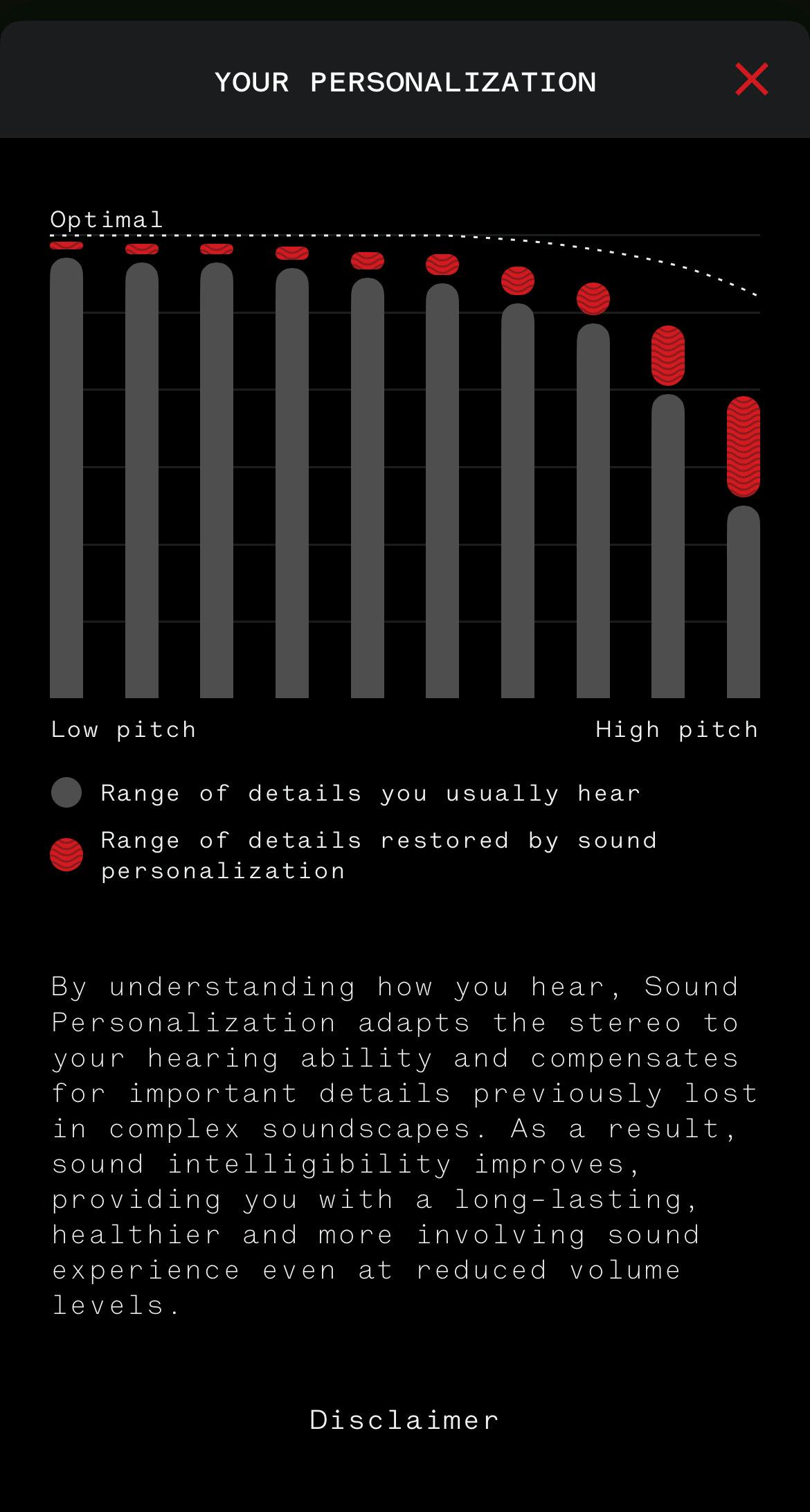
Once you’re set with your fit, you can get to the nitty-gritty — sound personalization. Nothing partnered with the hearing and sound personalization company Mimi to include an ear test that gauges what frequency of sounds you may struggle to hear. Getting to that conclusion involves listening to a series of tones across the frequency range and pressing a button in the app signaling when you can hear the tone and when the tone fades from earshot. You’ll also be required to submit the year you were born because, let’s be honest, hearing range is very much a product of age.
By the end, the idea is that Nothing should have a sturdy enough understanding of your hearing spectrum to provide a custom equalization that best fits your particular ears. Naturally, as an advocate of Nothing X and the customization it offers, I took the plunge. The results were... not bad!
I admittedly didn’t notice a huge difference between the default “balanced” EQ and my own customized Nothing EQ, though that could be the product of my hearing range. Someone who struggles more with hearing high frequencies, for example, might notice a drastic difference. And even if my results weren’t radically different, there’s something to celebrate in the fact that personalized EQ even exists. I mean, you can even fine-adjust after your personalized sound profile is created whether you want a “softer” “recommended” or “richer” articulation of that tuning.
From the moment I saw where Nothing was headed with Nothing X, this is the type of granularity and personalization I wanted. Now it’s here! And I’ll be damned if I’m not pleased about it. It’s in these “beyond” moments that the Ear 2 differentiates itself from AirPods with a more personal touch. It’s impossible to argue with great sound, but when you’re battling a titan like Apple with enough name recognition to tilt the world on its axis, you need to bring something to the table. In the Ear 2’s case, that something is personalized software.
Speaking of personalization, Nothing takes the same approach with ANC inside its Nothing X app. The difference here is that instead of arriving at a personalized ANC and then sticking with it, Nothing says its Ear 2 can actively monitor your ambient noise levels and adjust your ANC accordingly.
To take advantage of personalized ANC, all you have to do is pop in your buds and navigate to settings. Go to the “personalized ANC” section and take the brief test, which uses the Ear 2’s microphones to gauge your ambient sound. If you’re home like I was when I initially tried to take the test, the app will tell you there’s not enough noise to give you a proper reading. If you’re out and about — near, say, a subway, for example — then the test should be able to spring into action.
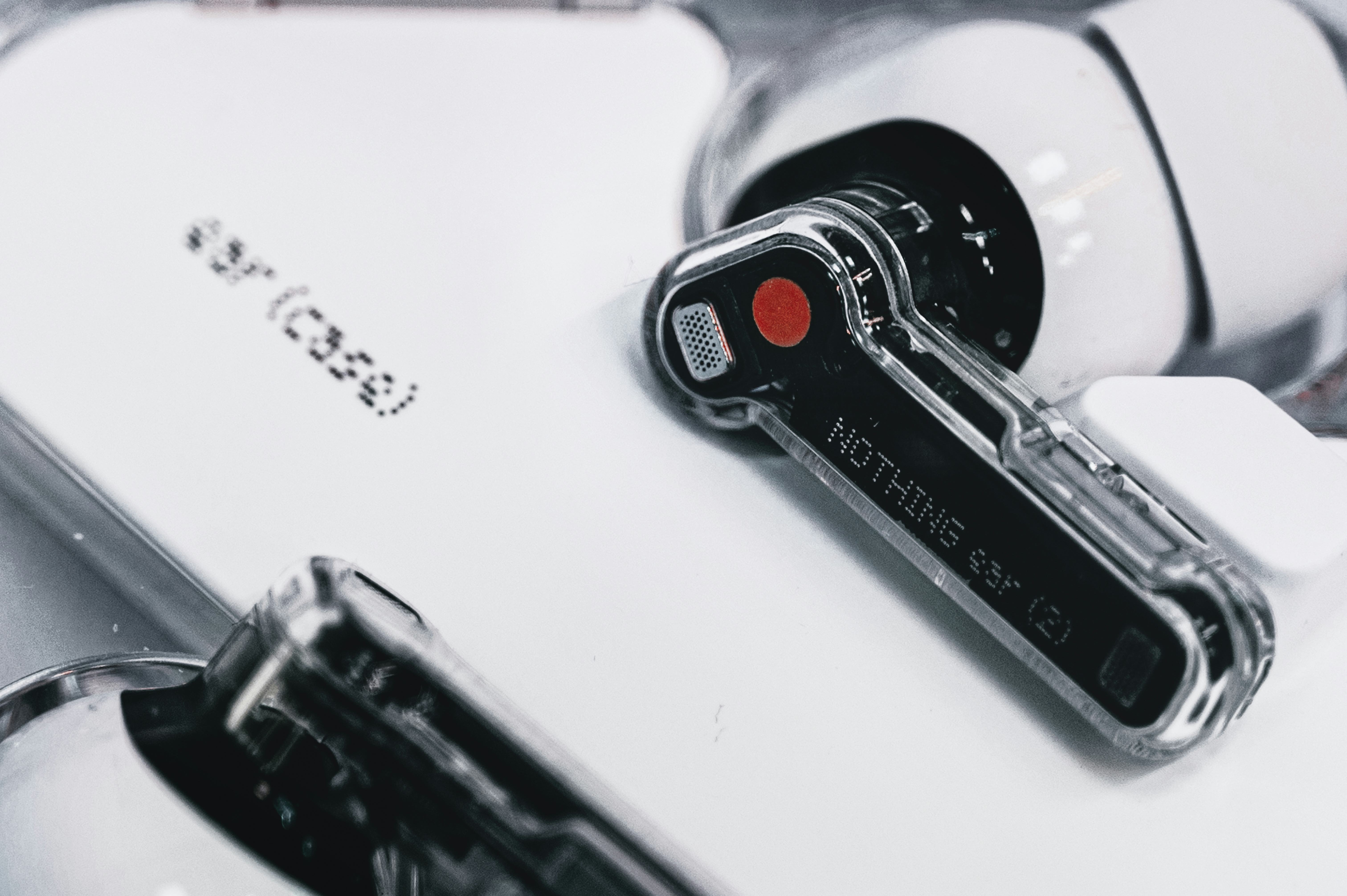
Admittedly, most people might just want ANC at full blast all the time — if that’s what you prefer you can actually go into Nothing X and set your ANC levels accordingly — but if you want a level of ANC tailored to your environment, this is the way to go.
Admittedly, I was a bit skeptical about why I might need to adjust ANC, but sure enough, in my testing, the moment arose. For me, that time was waiting for my drink to be ready at a busy coffee shop. Normally I would have paused my music while I waited, making sure I didn’t unintentionally ignore the barista beckoning me to pick up my order, but instead I just pulled open the Nothing X app and turned ANC off. Boom: one foot in the real world, one foot in “Spray Paint” by Deeper.
Is having that option necessary to enjoying a pair of wireless earbuds? Absolutely not. But in a world where you can give consumers control over how and when they enjoy something. Why not hand over the keys and say “you decide.”
Something to Write Home About
The Ear 2 is jam-packed with improvements over the Ear 1, and not all of them are created equal. Improved hardware and more granular software do the heavy lifting, while perks like LHDC, a codec that supports hi-res audio, actually fall by the wayside.
I sampled the Ear 2 on a compatible Android device using Tidal instead of Spotify to get a taste of what LHDC (an audio codec for hi-res Bluetooth streaming developed by Sony) has to offer, and have no complaints. The quality is crisp, but not so crisp that I felt the need to ditch my iPhone (which doesn’t support the LHDC codec) to get premium audio quality.
If anything, my indifference to the inclusion of LHDC says everything you need to know about the Ear 2. With or without hi-res Bluetooth streaming, they sound great — and they work great, too. In more than a week of testing, I experienced one connectivity hiccup where audio from my phone dropped out for a fraction of a second. If that’s the extent of the bugs here, I’m fine with calling the Ear 2 next to flawless.
I’m fine with calling the Ear 2 next to flawless.
If you’re someone who’s either on the fence about buying AirPods or someone who’s looking for an audio outlet outside of Apple’s ecosystem — whether for aesthetics or more features — the Ear 2 is impossible to ignore. And for $150, Nothing’s newest buds actually feel like you’re getting everything that you paid for, plus the additional personalization that I mentioned.
There are a lot of things that are clear about Nothing’s Ear 2, and design is just one of them. For me, the most apparent message is that Nothing — even with its new kid on the block reputation — is growing up fast, and with a little learning curve, it’s finally ready to take on the big boys. Or maybe even outpace them.
Photographs by Xin Xin







